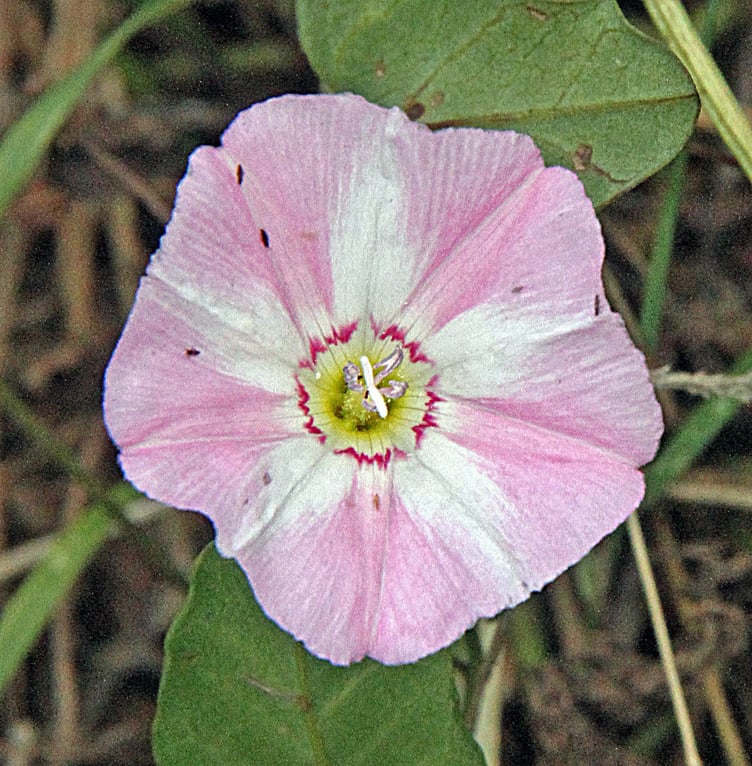As I walk the country lanes my eyes are always focused on the hedgerow.
Last week I saw a small object fluttering in the breeze amongst the vegetation, which turned out to be a Green lacewing caught up in a spider’s web.
There was no sign of the spider so I freed this pretty little fly from the silky threads and it flew down the road ahead of me without so much as a thank you.
However, after walking further along the road, there it was again, caught in another web but this time it was quickly being wrapped in silk by a garden spider. Such is life I suppose.
The bindweed that all gardeners are familiar with is the Hedge bindweed which, if left to grow will produce a pure white trumpet shaped flower.
For many years farmers and gardeners have been trying, with little success, to eradicate this troublesome plant, and when removing it from the garden it is important to dig it all up as even a short piece of stem will take root and grow.
There is, however, a beautiful cousin called Field bindweed with small pink flowers with five white stripes radiating from the centre.
This plant grows anywhere from gardens to waste ground and I have found them on farmland near gateways.
The stems make their way across the ground until they find anything growing upright, then they are away and can complete one coil in less than a couple of hours.
I walked through a path-field that was full of maize, so I went around by the hedge as the corn was over a couple of metres high and if I had walked the path that had been left diagonally from the gate to the stile, I would have seen nothing but corn.
Usually at this time of the year, there is a lot of Common fumitory growing around the edge of the field, but on this occasion the flowers were very light and feeble due to lack of water.
But I did find a partridge’s nest in the hedge creep, or rather the remains of three light green eggs that had, no doubt, received a visit from some members of the crow family.
A great pity really as we often see pheasants around the countryside, but we rarely see partridges.
There are lots of Arum, or Lords and Ladies berries, on stems along the hedges and on waste ground. These red berries are extremely poisonous but really brighten up the hedgerows.
I was out in the garden beneath the trees pulling up weeds when a squirrel appeared.
Now, I love seeing these small animals in the garden but they will empty the bird feeders quite quickly. In fact, they waste more than they eat because they always hang upside down whilst feeding.
So I hung the feeders on a wire stretched between two wooden posts, making it impossible for them to reach the seeds, but they still come to look around in case the birds have knocked a feeder to the ground.
Anyway, this squirrel gave me a sour look and disappeared.
Later whilst e-mailing my son Sean in Kent, I told him what had happened and he replied that if I wanted a picture of a squirrel, he could send one down as Sharon, his better half, had caught one in the garden tree with her camera early on that morning. So the squirrel photo in today’s column was taken by Sharon.





Comments
This article has no comments yet. Be the first to leave a comment.